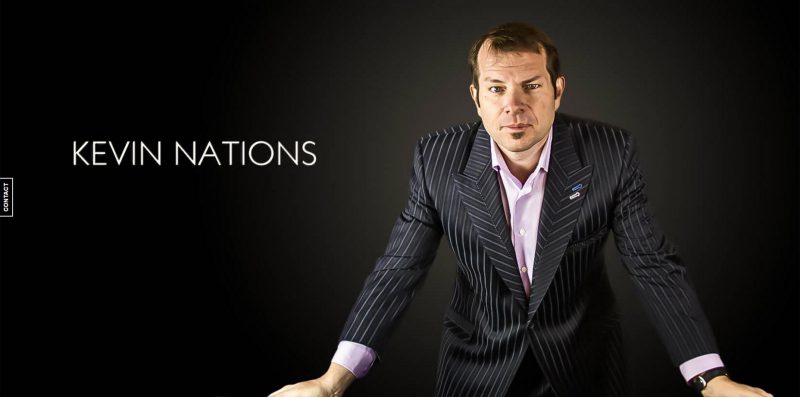Taking steps to increase law firm profitability is always in the back of lawyers minds but their daily responsibilities can quickly take up the need to focus on growing their business. However, it doesn’t have to be time consuming to enhance profitability. These 4 strategies can easily be implemented all at once or at your own pace to support your law firms growth.
1. Position yourself as a thought leaders
Education attracts client attention; information converts client attention to revenue. You can use the “teach or be taught” framework to approach partners who have an audience filled with your clients.
Here are a few examples:
- Business law firms can reach out to notable or up and coming education providers, including Entrepreneur Magazine, Business Insider, Fortune, Fast Company, or Success magazine. You can offer first and second-tier providers content that helps their audience and drives more traffic to your business.
- Real estate law firms with deep knowledge or expertise can partner with local clubs, e.g., high net worth, investor clubs, real estate companies, lenders, and real estate agents to provide education. As a real estate professional, you can host events, conduct workshops, run seminars, or give talks that educate and inform prospective clients.
- Tax law firms can create unicorns in their industries — training their associates so they have their LL.M (master of law degree in taxation), and are designated as Certified Public Accountants (CPAs). They can then use this, along with other factors, to advertise their firm effectively and educate their prospects.
The teach or be taught framework is helpful because it positions you as the ideal solution for the specific prospects who consume your educational materials.
2. Give what you have
You can approach publishers and content providers with a deal. You provide their audience with helpful content in exchange for a small mention or micro offer from your business. These offers can include:
- A weekly or monthly column on a publisher’s website, app, or portal
- Hosting regular Q&As for your publishers and partners
- Creating exclusive content in a variety of formats for your publisher or partner
What’s great about this strategy is it provides you with significant leverage. The content you create for one partner can be reused, repurposed, and republished elsewhere. You can create education pieces that generate results again and again, for years on end that continue to perform, independent of your day-to-day efforts.
3. Provide relevant solutions
This is what you do for clients. It’s an inherent part of practicing law, but it’s also a component that’s neglected by most attorneys and law firms.
Protecting prospects before they become clients is helpful because it shows clients your primary concern isn’t about money. Instead of appearing needy or desperate to close the sale, you present your firm as the quality firm it is. Model Rule 1.18 is in agreement with this.
Client-lawyer relationship
“[1] Prospective clients, like clients, may disclose information to a lawyer, place documents or other property in the lawyer’s custody, or rely on the lawyer’s advice. A lawyer’s consultations with a prospective client usually are limited in time and depth and leave both the prospective client and the lawyer free (and sometimes required) to proceed no further. Hence, prospective clients should receive some but not all of the protection afforded clients.”
It’s important to protect prospects without creating an attorney-client relationship prematurely. Here are a few ways to achieve this:
- Limit direct, one-on-one consultations with prospective clients
- Focus your attention on creating one-to-many interactions in a public, semi-public, or group setting
- Don’t specifically request or invite prospects to submit information about a potential representation without clear and reasonably understandable warnings and cautionary statements that limit the lawyer’s obligations
You provide clients with information in a public setting on a one-to-many basis. This means you can share more general or introductory information. You can do this in a few ways:
- Q&A format
- On forums that focus on high-level topics
- As a guest on the news, television or web show
- In speeches in a public, semi-public or group setting
- Teach courses in a specific context for an established organization
There’s more you can do to protect prospective clients, but this is generally oriented around a one-to-many relationship.
4. Be a people connector
The thinking behind this framework is simple. You find and connect people to solutions or support they need. You provide ready access to influential people becoming an influencer yourself. Connecting people who can help each other is one of the most useful skills you can cultivate in your law firm, especially if you’re in a B2B practice area.
The best part, there’s more than one way to do it.
- Introduce people who can provide value to others
- Introduce two influencers to each other
- Introduce two people, but seed the relationship with an idea
- Host an event (e.g., webinar, conference, speech, dinner) but invite influential and complementary partners
- Position yourself as someone who can connect others to the people, resources, and opportunities they need
- Nurture the relationships you spark
This strategy takes a long term approach. Introduce people and organizations that can help each other. Give people what they want, seed the relationships with value, then watch the positive results customers, sales, reviews, pour in.
Using these strategies can increase law firm profitability
You promote your partnership, advocacy, education, or support publicly in a way that’s appropriate and respectful of all parties involved in the framework. The more value you’ve created, the more you promote the work, the further word will spread. Doing this generates goodwill in a way that’s difficult to quantify and difficult to dispute.
In your capable hands, these frameworks can provide you with the peace of mind you need to outperform your competitors. Combine these strategies to increase law firm profitability and propel your firm further than your competitors expect.


